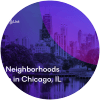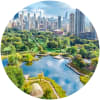28 Things to Know Before Moving to Chicago, IL in 2025

Chicago, with its vibrant culture, stunning architecture, and delicious deep-dish pizza, is a magnet for those seeking a dynamic and exciting place to call home. But before packing your bags and heading to the shores of Lake Michigan, there are a few things you might not know about this unique metropolis.
From fascinating historical quirks to surprising geographical oddities, this guide will equip you with the knowledge you need to navigate Chicago like a true local. So, get ready to delve into the unexpected and discover the hidden gems that make Chicago such a special place.
28 Things to Know Before Moving to Chicago
1. Does Chicago Have a Good Economy?
Chicago has one of the world's largest and most diversified economies with a typical Gross Regional Product (GRP) of nearly $700 billion. While its unemployment rate is slightly higher than the national average at 4.2%, its abundant industries, offices, and services mean that many people come to Chicago for work or to find a job.
If you're looking to work in Chicago, be aware that leisure and hospitality are significant industries, as well as manufacturing, transportation, Information Technology, and Health Services. Depending on the type of career you're building, JPMorgan Chase, Deloitte, Boeing, United Airlines, and Ford Motors are all significant employers around the greater Chicago area.
2. What Caused the Growth of Chicago?
Chicago has long been a mainstay of thriving urban centers in the US. French explorers, missionaries, and fur traders arrived in the 17th century, followed by a US Army fort. By 1837, business started booming as Northern businessmen saw the real estate potential in Chicago's emerging transportation hub. A fire destroyed much of Chicago's business district in 1871, though it continued to grow rapidly as a dominant Midwestern hub for business, sports, jazz, and culture.
The city is home to 2.71 million people and is among the largest cities in the US, as well as the most populous city in the Midwestern United States. People from around the world relocate to Chicago, or simply visit this lakefront city. You may hear a variety of languages spoken around Chicago's diverse neighborhoods.
3. What is the Cost of Living in Chicago?
Living in Chicago is pricier than many midwestern cities like Indianapolis, though cheaper than a metropolis like New York City. According to data from BestPlaces, the cost of living in Chicago is only 7% higher than the national average. However, PayScale estimates it to be 20%, with housing being 52% higher than the national average.
Our own data suggests that while there are definitely expensive neighborhoods in Chicago, there are a lot of more affordable options as well. Our latest rent report shows that median rent for a 1-Bedroom apartment in Chicago is currently $1,524, which is higher than many parts of the country, but much lower than NYC's $2,119 a month. So if you're looking for a more affordable but bustling metro, Chicago might be your place.
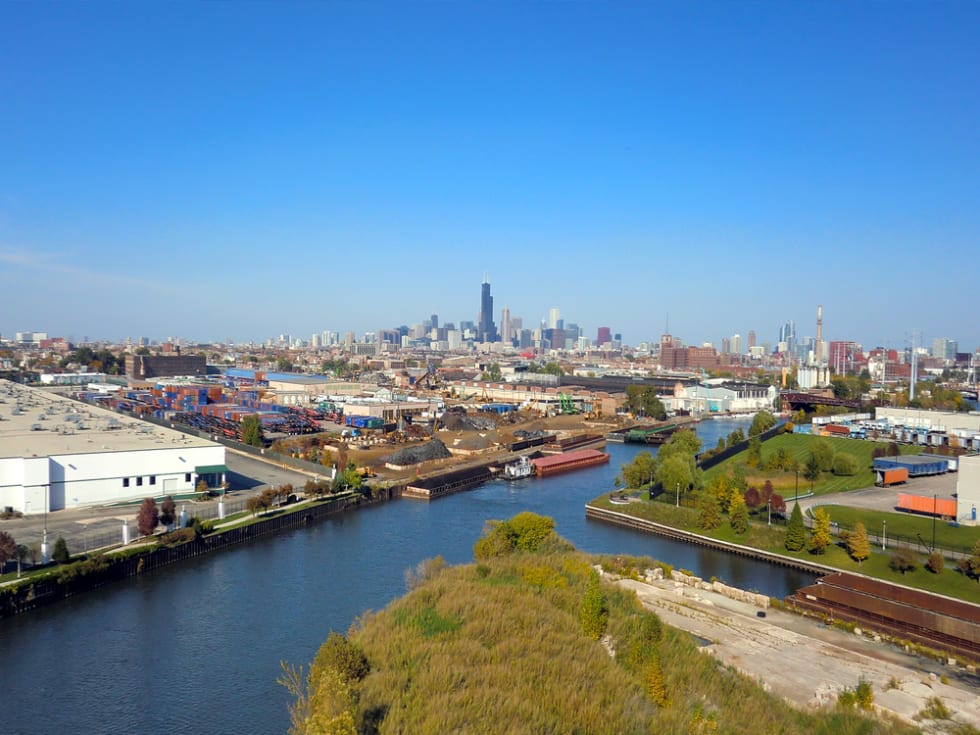
4. How Much is Salex Tax in Chicago?
Chicago locals enjoy some flexibility when it comes to taxes. Illinois currently taxes income at a flat 4.95% rate. The sales tax rate can get pricey when you live in Chicago. The minimum combined 2021 sales tax rate for Chicago is 10.25%. This figure represents a total of state, county, and city sales tax rates.
If you're interested in homeownership, plan to spend 1.55% for an average effective property tax rate.
5. Does Chicago Have Good Public Transportation?
The Chicago Transit Authority operates the L train, CTA bus service, and some surrounding suburban options. You can also hop on the Metro Rail for transportation between Chicago and the rest of the suburbs. If you live near the waterfront around Michigan Avenue, the Chicago Riverwalk, Ogilvie, or Chinatown, you can hop a water taxi to get to work.
Living in Chicago without a car isn’t challenging in the slightest if you live near public transportation. Chicago Public Transportation runs about $105 for service on the L train. You can also add in Uber, Lyft, taxi, cycling, and urban walking to make up the gaps of not having a vehicle.
Transportation will take up more of your budget than in other cities. Expect to spend about $5,149 on transportation as a single adult—families of two working adults and a child need at least $11,753.
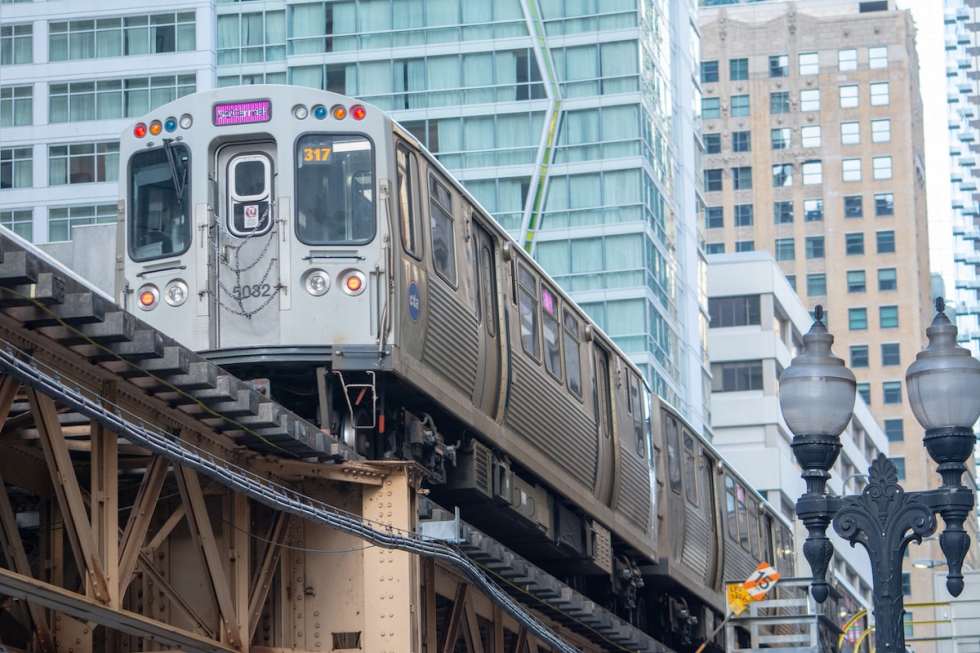
6. Why Is Chicago Called "The Windy City"?
Chicago lives up to its nickname of "The Windy City," although the city has evolved over time. It’s believed the name was used initially to depict locals as people who liked to brag a lot. However, Chicago's proximity along the shores of Lake Michigan makes it breezy during summers. Wind can get fierce during inclement weather, and winters are cold.
In fact, Chicago winters are notoriously brutal. The city’s coldest month is January, where temperatures dip to 0-degree average. The hottest temperatures come about in July, where temperatures around 81 degrees are common. The mild summers make Chicago a desirable place to live, work, and play, although it's essential to layer up even during warmer months.
7. Why Is the Chicago River Famous?
Believe it or not, the Chicago River doesn't follow the natural course of water flow. Originally, the river flowed from west to east, emptying into Lake Michigan, Chicago's source of drinking water. In the late 19th century, however, Chicago's rapid growth led to a major sanitation issue. Raw sewage flowed into the river, threatening the city's water supply and public health.
In a remarkable feat of engineering, the city embarked on a project to reverse the flow of the Chicago River. By constructing a series of canals and pumping stations, they diverted water from Lake Michigan into the river, sending the now-diluted effluent away from the city and towards the Mississippi River watershed. This ingenious solution, completed in 1900, not only saved Chicago from a public health crisis but also stands as a testament to the city's innovative spirit.
8. What's One Fun Fact About Chicao?
While it might surprise you, Chicago offers the bluest waters outside of the Caribbean. First, Lake Michigan is incredibly deep, making it naturally more blue than other, shallower lakes. Furthermore, the water is colder, meaning that it is harder for algae to grow. Finally, local governments have made concerted conservation efforts to keep Lake Michigan clean and free of pollution, which has an enormous impact on the water quality, purity, and reflective ability.
9. How Many Bridges are there in Chicago?
With a whopping 37 bridges that lift, tilt, or swing open, Chicago boasts the most movable bridges of any city in the world. These marvels of engineering play a vital role in both river traffic and land transportation. Whether you're on a boat cruise or simply crossing the river on foot, witnessing a bridge rise to allow a passing vessel adds a touch of magic to your Chicago experience. The intricate mechanics and historical significance of these bridges make them a fascinating aspect of the city's landscape.
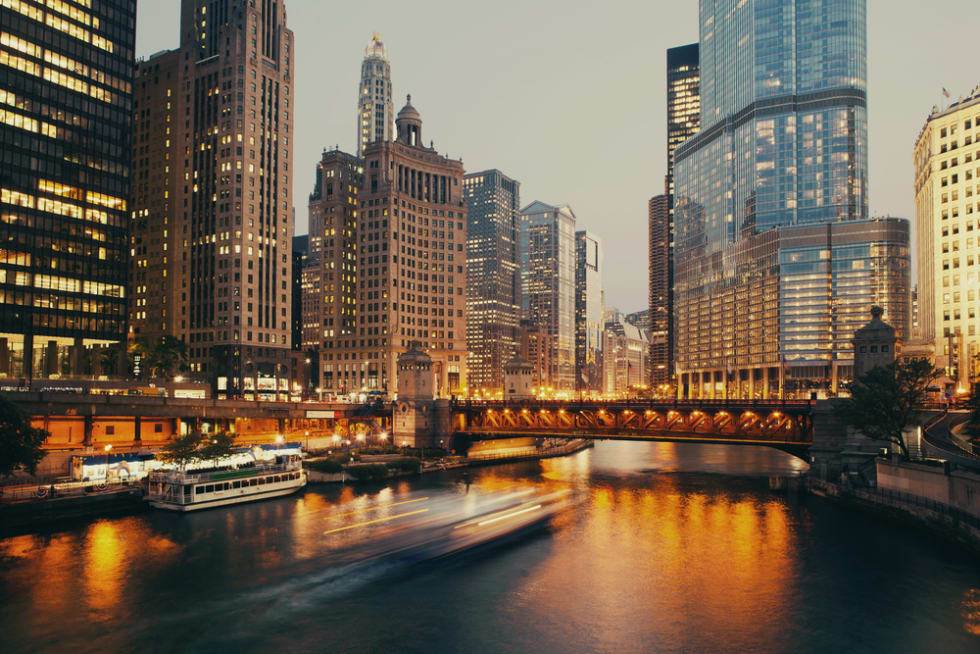
10. What are the Best Neighborhoods in Chicago?
Chicago offers something for everyone, from upscale high-rise living to trendy urban lifestyles. Here are some of the best Chicago neighborhoods to explore.
Bucktown
Bucktown is perfect for renters who enjoy nightlife, entertainment, and quick access to public transportation. Music lovers stop at The Hideout for art, music, poetry, and plays. Run or bike along the elevated Bloomington Trail to catch gorgeous views of the city while working up a sweat.
Hyde Park
Hyde Park is home to historic structures and has housed many famous people throughout American history, from Amelia Earhart to Chaka Khan. The neighborhood is also home to the University of Chicago and the Museum of Science and Industry, which is located in the last remaining building from Chicago's World Fair in 1893.
Wicker Park
Wicker Park is known for its view of the area where Milwaukee Avenue and North Avenue meet. It's similar to the Flatiron Building in New York City. However, instead of the NYC skyline, Chicagoans can admire the Chicago skyline and the city's hustle and bustle from this hipster haven.
Lincoln Park
Lincoln Park is more than a tourist spot. It's a robust neighborhood located around the crown jewel of the city. It's also home to the Lincoln Park zoo, the oldest free zoo in the country. For outdoor lovers, Lincoln Park features a host of trails and walkways that are perfect for taking in the changing leaves in the fall.
River North
River North is a newly revitalized area that's perfect for those who love urban living, art, and food. It's located within the Near North Side District, home to the Cold Coast and Navy Pier communities. Renters enjoy repurposed warehouses and manufacturing plants in this creative-minded community full of galleries, pubs, and coffee shops.
Read more about the best Chicago neighborhoods here.
If you're concerned about safety in your Chicago neighborhood, take simple precautions like not walking alone at night. Stay informed about crime around your community by joining a watch club.
11. What Food is Chicago Best Known For?
Chicago has long enjoyed a reputation as a famous food town. Bon Appétit Magazine even named Chicago the top food city over New York City and other worthy contenders. Chicago is home to prestigious James Beard Award winners, including Lettuce Entertain You, Sun Wah BBQ, Arun's, and Parachute.
Of course, you can't live in Chicago without adopting a love of deep-dish pizza and Chicago-style hot dogs. Load up your next steamed hot dog with yellow mustard, white onions, green sweet pickle relish, a dill pickle spear, tomato slices, and pickled sport peppers. A dash of celery salt is crucial to top off your iconic Chicago hot dog.
Chicago boasts a booming cocktail scene with everything from curated concoctions to tiki-inspired drinks. Grab a drink at Time Out Market Bar, enjoy spirit-infused drinks from Scofflaw, or dance the night away with your favorite local DJs at The Whistler.
12. Is Chicago Good for Outdoorsy People?
Despite the concrete jungle reputation of Chicago, there are 570 parks in the city. Parks, green space, and trails surround Downtown Chicago. The most popular options are along with the waterfront areas, perfect for a day of jogging and cycling.
Chicago's parks are also full of gems. Famed designer Frederick Law Olmsted designed Washington Park, a gorgeous park home to the DuSable Museum, a bird and butterfly sanctuary, and a few lagoons.
You can also hit the beach without leaving the city properly. Try North Avenue Beach, 12th St Beach, Montrose Avenue Beach, and the dozens of lake trails that make a living in Chicago a unique, waterside experience. North Avenue Beach is home to 22,000 square feet of space featuring upper decks and portholes to enjoy the sparkling waterfront.
Spending time outdoors is a cornerstone of Chicago living. You'll see why they call it "the city in a garden."
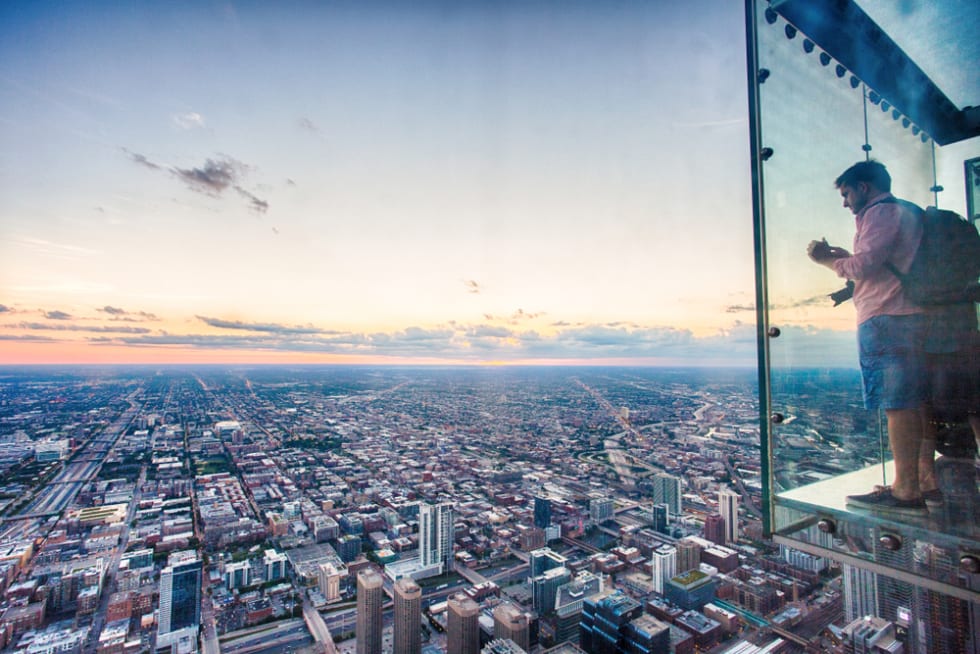
13. What are Some Fun Things to Do In Chicago?
Chicago is a world-class city with endless attractions and things to do year-round. Root for the home team at Wrigley Field, which sits on the North Side of Chicago. The historic stadium was built in 1914 and has housed the Chicago Cubs for over a century.
Sears Tower, also known as Willis Tower, has 108-stories and sits 1,450 feet high. Take a tour on the Ledge Skydeck for the views, take advantage of a unique photo op, and to learn more about the tower and city's history.
The infamous Bean, or Cloud Gate, is the hallmark of public art in the heart of Chicago. The sculpture is the centerpiece of AT&T Plaza at Millennium Park in the Loop area. The reflective Bean is made of stainless steel, drawing visitors to interact with its reflective surface.
Taking in Chicago's architecture is a favorite pastime in the city. Take a self-guided walking tour and snap some shots of the Aqua Building, the Art Institute of Chicago, and the Carbide and Carbon Building.
Spend a day walking around Navy Pier. Opened in 1916, the amusement area and shipping facility comprises 50 acres of gardens, venues, shops, and restaurants. There's also a 150-foot Ferris wheel and a historic carousel.
14. What Sports Teams is Chicago Known For?
Chicago is a huge sports city where locals take team spirit seriously. You have your pick of the Bears, Bulls, Cubs, White Sox, Blackhawks, Sky, and Fire FC. Even if you're not a basketball fan, Chicagoans are loyal to 15-season NBA player Michael Jordan. He helped win six championships with the Chicago Bulls, and his presence is felt heavily around Chicago.
Wrigley Field is an iconic institution and has hosted the Chicago Cubs for over a hundred years. You can see a tour for yourself and learn more about the history of the stadium.
New on the Brooklyn scene, Whirlyball opened in Bucktown to bring locals bowling, laser tag, and whirly ball, all in one place. You can also find rock climbing, yoga, and more at Brooklyn Boulders Chicago.
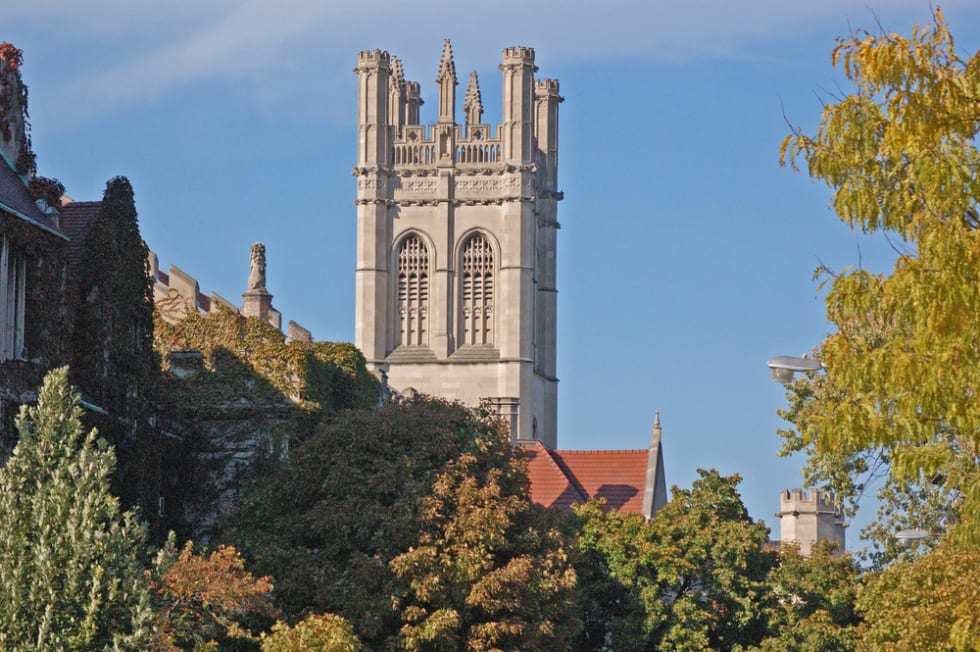
15. How Many Universities are in Chicago?
Chicago is ideal for higher education students. Pursue an undergrad or graduate degree in the Windy City at one of Chicago's renowned institutions.
The University of Chicago is located in the Near West community adjacent to the Chicago Loop. Some of the significant fields of study include public policy. President Obama formerly served as a professor at its Law School.
Northeastern Illinois University is a public university with 8,000 students and is a Hispanic Serving Institution. The learning and research community is known for its degrees in Speech, Psychology, Health, and Engineering.
DePaul University is the largest Catholic University in the US and a private institution in Chicago. It's known for its Business, Management, Marketing, Journalism, Arts, and Science related studies.
Loyola University is a Jesuit Catholic University known for its biology, science, nursing, psychology, marketing, and finance programs. Students who live on campus enjoy the waterfront and proximity to areas like Hartigan Beach and Tobey Prinz Beach Park.
16. Are There Music Festivals In Chicago?
Chicago's annual Lollapalooza music festival was founded in Grant Park in 1991 before spreading to the rest of the country. Performances include rock, heavy metal, punk, electronic music, hip hop, and more. Summer dates span four days and draw thousands of attendees.
The annual Chicago Jazz Festival is a popular Labor Day Weekend tradition that helps promote jazz appreciation. The Millennium Park festival is free and features both veteran and up-and-coming jazz artists.
Runners and supporters gather at the Chicago Marathon every October. The marathon is the fourth-largest race and is a pinnacle achievement for runners.
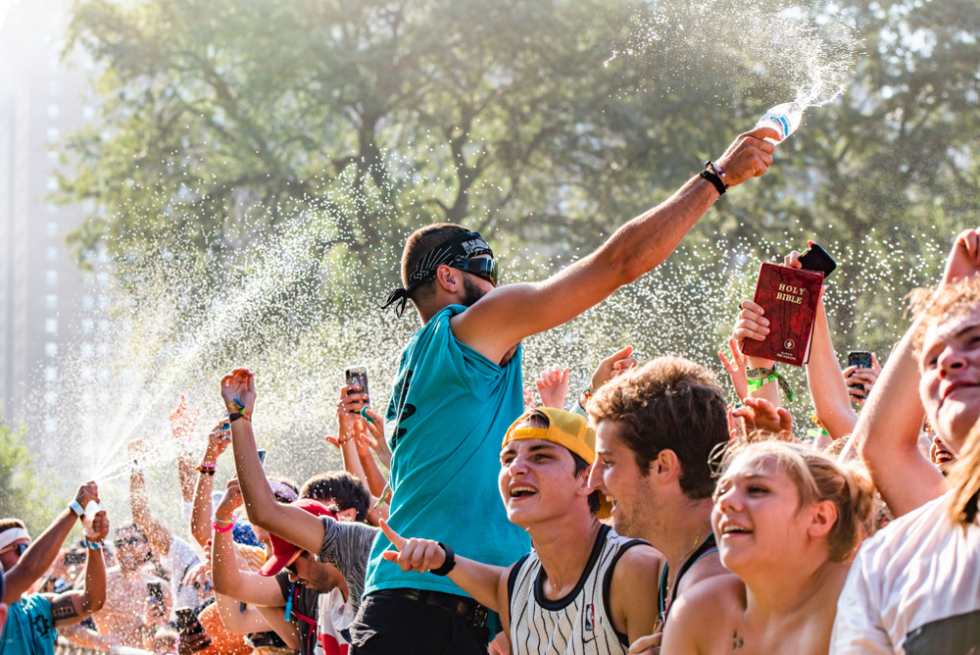
17. Where do Most People Move to Chicago From?
Chicago is a diverse city with people moving in and out from different parts of the world. You’re in good company if you’re hoping to relocate from a nearby midwestern city. According to Apartment List's most recent migration report, the highest percentage of people moving to Chicago are from Indianapolis, Milwaukee, and Detroit.
There are also outbound moves happening around Chicago. Renters who currently live in Chicago, but are considering moving elsewhere, are searching for apartments in warmer climates, such as Phoenix, Miami, and Los Angeles.
Learn more about moving to a new state.
18. How Do Chicagoans Survive the Winters?
Surviving a Chicago winter is all about dressing in layers and being prepared for the extreme cold and snow. Chicago’s winters can be brutal, but with the right gear, locals make it through in style. The essentials include a heavy-duty winter coat, preferably one that’s insulated and can withstand the harshest conditions. A more moderate coat is also useful for days when it’s cold but not unbearable. Wool coats are a popular choice!
Snow boots that are waterproof, with good tread to avoid slipping, are also a must-have to deal with icy sidewalks and slushy streets.
Beyond the outer layers, wool socks and warm base layers are key for staying comfortable. Many Chicagoans swear by Uniqlo Heattech for their base layers, which they wear under pants and sweaters for extra warmth. A cozy hat, gloves, and a scarf help to trap body heat and protect against the biting winds that are a signature of Chicago’s winter weather.
But surviving the winter isn’t just about staying warm physically.
The lack of sunlight and the long, dark days can take a toll on mental health. To combat seasonal affective disorder (SAD), locals recommend getting outside whenever possible, especially in the morning when it’s typically less overcast. Vitamin D supplements can also be helpful during the months when sunshine is scarce!
Overall, the key is embracing the cold with the right gear and mindset. People have been making it through the cold for hundreds of years!
19. What Are the Most Walkable Neighborhoods in Chicago?
While there are plenty of good walkable neighborhoods in Chicago, these five seem to stand out the most:
- Streeterville: This vibrant neighborhood has easy access to Navy Pier, the Magnificent Mile, and Lake Michigan. It’s perfect for young professionals, thanks to the numerous dining, shopping, and nightlife options.
- Downtown Chicago: Encompassing Gold Coast and River North, Downtown is the heart of the city's business district. With top-notch entertainment and close proximity to major employers and schools, it’s ideal for professionals and students.
- Lincoln Park: Known for the Lincoln Park Zoo and its exciting commercial district, Lincoln Park's combination of green spaces, restaurants, shopping, and access to schools makes it an excellent walkable neighborhood.
- Fulton Market: This trendy area has transformed over the years from an industrial hub into a hotspot for art, food, and tech startups. Located just west of downtown, it offers a unique mix of dining options and boutiques, perfect for creatives.
- River North: A bit more upscale, this neighborhood offers a rich mix of art galleries, hihg-end dining, and nightlife. With proximity to downtown and plenty of cultural venues, it's a prime location for those who enjoy urban living.
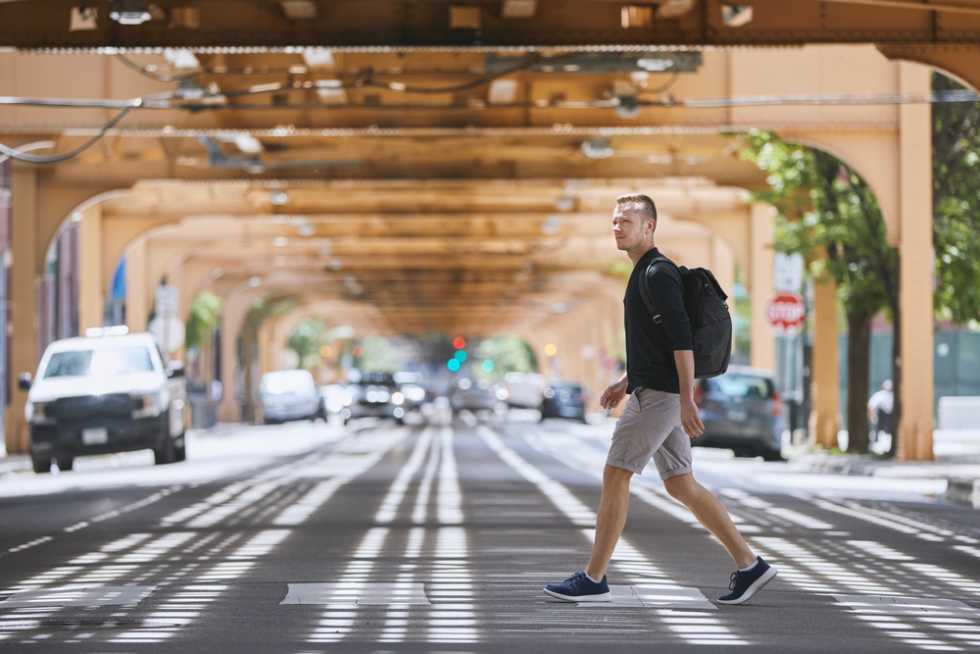
20. How Safe Is It to Live in Chicago?
When considering how safe it is to live in Chicago, it’s important to acknowledge that, like any large city, safety can vary greatly depending on the neighborhood. Overall, Chicago is a vibrant and diverse city with much to offer, but being aware of your surroundings and taking common-sense precautions is essential, as with any city.
For the most part, many residents feel safe, especially in well-populated areas. While crime exists in some neighborhoods, residents here use situational awareness and avoid areas with higher crime rates. From Lincoln Park to Chinatown, many people feel safe in their communities, with some occasional crime incidents such as carjackings but not frequent enough to significantly affect day-to-day life.
It’s also worth noting that crime does tend to be more concentrated in certain areas of the city, such as the South and West sides. These areas, however, are often misunderstood, as while they may experience more crime, they are also home to strong communities and neighborhood watches. Many residents of these areas recommend staying informed and using apps like Citizen to stay aware of local incidents without becoming overly fearful.
21. What Is Chicago's Art Scene Like?
Chicago's art scene is one of the most dynamic and diverse in the United States. Places like Pilsen, Bridgeport, and Hyde Park have become key spots for emerging artists. Pilsen is home to over 30 artist-run galleries, with a monthly gallery walk on the second Friday, Bridgeport hosts the Bridgeport Art Center, and Hyde Park’s Hyde Park Art Center has a constantly changing collection of contemporary works from local artists.
River North is another major art hub, with galleries like Ken Saunders Gallery and Richard Norton Gallery, all accessible through the First Thursday art crawl.
Beyond the ciy's art galleries, public art plays a huge role in the city, with sculptures and murals visible on nearly every corner. The Loop has several iconic pieces, including Picasso's sculpture at Daley Plaza and Chagall's Four Seasons mosaic.
22. What's the story behind Chicago's Green River tradition?
The story behind Chicago's Green River tradition dates back to the 1960s when a group of plumbers used fluorescent green dye to trace illegal pollutants in the river. Little did they know, this practical solution would set the stage for one of the city's most iconic traditions.
In 1962, Chicago's then-mayor, Richard J. Daley, saw an opportunity to celebrate St. Patrick's Day in a unique way. Inspired by the plumbers' dye, he decided to dye the entire Chicago River green as a bold symbol of the city’s Irish pride. On March 17th of that year, the river was dyed green for the first time, sparking a tradition that continues to this day!
Every year, on St. Patrick's Day weekend, crowds gather to witness the mesmerizing spectacle.
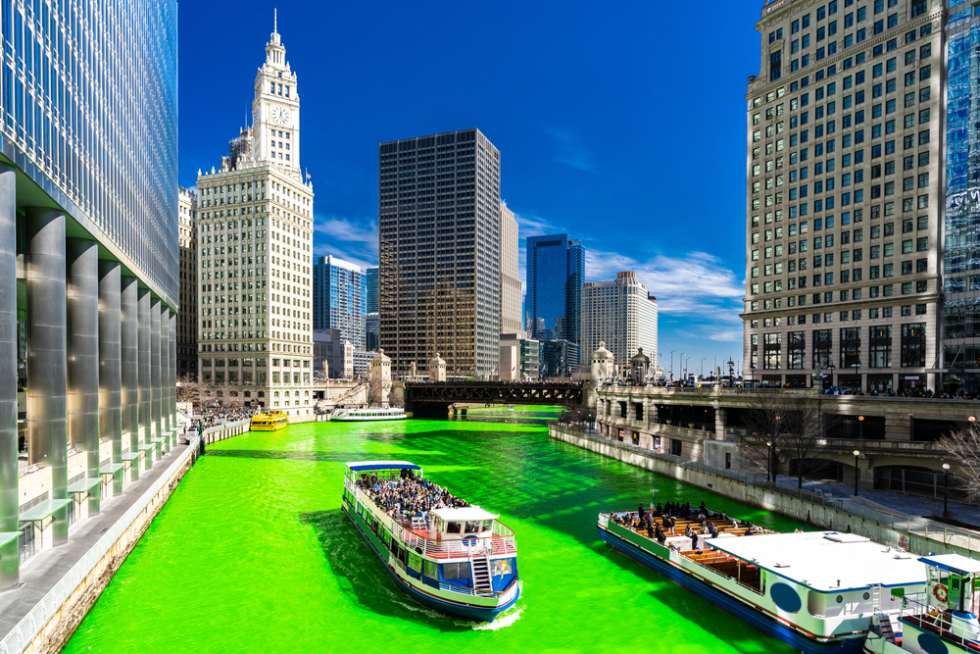
23. What's the difference between the North Side and South Side cultures?
The cultural differences between Chicago's North and South Sides are often reflected in their demographics, architecture, and lifestyle. The South Side tends to have an older, more established culture with historic buildings and a sense of sturdiness. It also has more sprawl, offering more space compared to the tightly packed North Side. While both sides are diverse, the North Side is often seen as wealthier, with a higher cost of living and more gentrification, contributing to a noticeable wealth gap.
In terms of culture, the North Side is associated with a younger, more cosmopolitan crowd—think graphic designers, ethnic food lovers, and trendy professionals. On the other hand, the South Side is often seen as home to more seasoned individuals, like hard-working parents with blue-collar jobs, offering a more grounded and no-nonsense attitude.
While these two cultures can sometimes clash, especially when it comes to their beloved baseball teams, they share a deep appreciation for the city's history and diversity. Ultimately, both sides contribute to the rich fabric of Chicago.
24. Which Chicago Beaches do Locals Actually Visit?
Not many people think about beaches when they think of Chicago but there are actually a diverse range of waterfront spots to enjoy! Some of the beaches Chicagoans flock to most include:
- North Avenue Beach: Popular for its spacious shoreline, beachfront bars, and proximity to Lincoln Park Zoo, this beach is perfect for water sports, volleyball, or simply soaking in the views of the skyline. We recommend grabbing a bite at Castaways or Shore Club!
- Oak Street Beach: Located near downtown, Oak Street Beach provides a mix of beach activities like volleyball and bike rentals. With its view of iconic Chicago buildings, it’s a great spot for people-watching.
- Loyola Beach: If you want a quieter beach experience, Loyola Beach is the perfect place. There are also plenty of nearby art galleries and shops in Rogers Park.
- 31st Street Beach: This might just be the best beach for water sports enthusiasts, with tons of jet ski and kayak rental options. It's also home to the laid-back Pier 31 bar and grill.
- Montrose Beach: Known for its dog-friendly area, Montrose Beach is a spacious and family-friendly spot for people with furry friends! It's also a natural area popular with birdwatchers.
25. What are the Most Popular Annual Events in Chicago?
Chicago is home to a wide range of annual events for all kinds of people, some of the most popular of which include:
- Bank of America Chicago Marathon: This 26.2-mile race through downtown Chicag attracts people from all over the U.S. It’s a fantastic way to see the city's landmarks and challenge yourself!
- Chicago Blues Festival: Chicago's blues heritage runs deep, and this festival offers one of the best ways to immerse yourself in it, as it features performances from both legendary and emerging artists.
- Taste of Chicago: A food lover’s paradise, Taste of Chicago offers a variety of local dishes from the city’s best restaurants. It's a great way to sample the best of Chicago’s culinary scene.
- The Magnificent Mile Lights Festival: This unique festicval celebrates the start of the holiday season with a festive tree lighting, activities, and a parade featuring Mickey and Minnie Mouse, making it a magical experience for all ages.
- St. Patrick’s Day Parade: Of course, you can't forget about the Chicago St. Patty's Dary Parade, which is one of the city’s most spirited events, with thousands gathering to honor Irish heritage.
26. What's the Significance of Chicago's Flag?
The Chicago flag as we know it today was adopted in 1917. Designed by Wallace Rice after a design competition, it consists of two blue stripes, three white bands, and four red six-pointed stars. The flag’s design is a reflection of Chicago’s physical and historical landmarks.
The blue stripes represent the city's waterways, with the top stripe symbolizing Lake Michigan and the north branch of the Chicago River, while the bottom one represents the south branch and the Chicago Sanitary and Ship Canal.
The four red stars on the flag stand for key events in Chicago's history: Fort Dearborn, the Great Chicago Fire of 1871, the World’s Columbian Exposition of 1893, and the Century of Progress Exposition of 1933-34.
Originally, the flag had only two stars, but two more were added in the 1930s. The six-pointed stars, a unique design for a city flag, were chosen by Rice to distinguish it from other flags, which typically use five-pointed stars.
Today, Chicago's flag is widely recognized across the country, ranking second in popularity after Washington, D.C.'s flag.
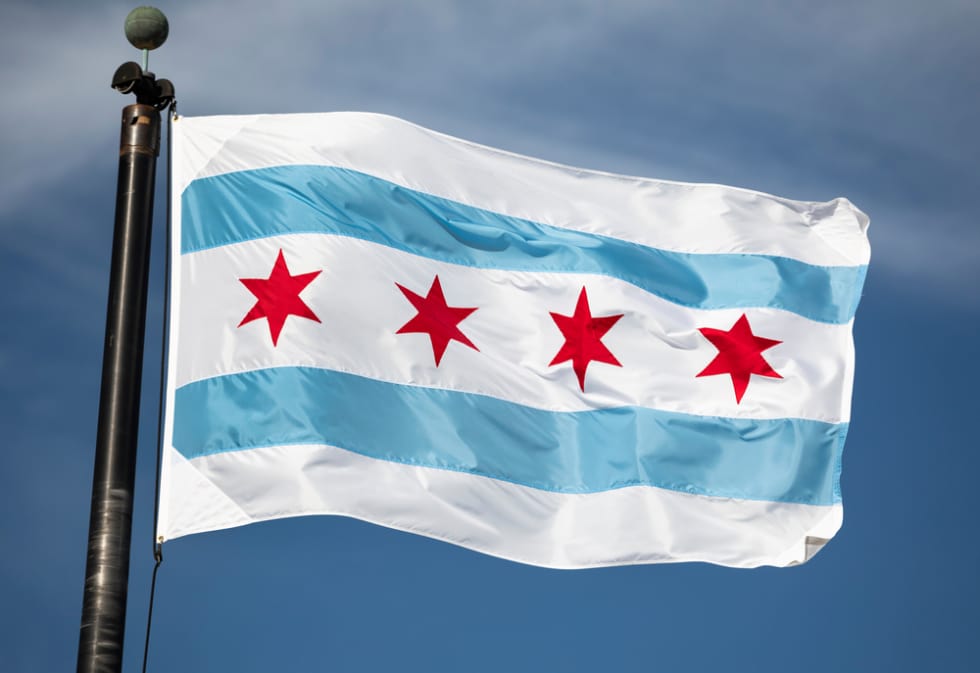
27. Why are Chicagoans So Obsessed with Speakeasies?
Chicagoans’ fascination with speakeasies is rooted in the city's rich history during Prohibition. From 1920 to 1933, alcohol was banned, but Chicago’s underground bars, known as speakeasies, flourished in defiance.
These secretive establishments became hubs of social life, and with hidden entrances, secret passwords, and covert atmospheres, they provided a thrilling escape from the constraints of Prohibition. Chicago was also once notorious for its mob influence, offering the perfect backdrop for these illicit bars. Infamous figures like Al Capone controlled the bootlegging trade.
Even though Prohibition ended long ago, the allure still persists. Today, Chicagoans continue to seek out these hidden gems for their nostalgic connection to the past.
Modern speakeasies, like The Drifter and Untitled Supper Club, keep the spirit alive with their vintage decor, secret entrances, and craft cocktails.
Key Clubs, which are a subset of speakeasies, are also popular in Chicago. You won't find access to these exclusive, members-only venues without knowing the right people, however, so we wouldn't recommend wasting your time searching for one online!
28. Is Chicago Considered a "Foodie" City?
Yes, Chicago is definitely considered a "foodie" city. It's known for its culinary creativity with a variety of iconic dishes that have earned it a spot on the food map.
As you might already know, Chicagoans take immense pride in their deep-dish pizza and their signature ketchup-free hot dogs, with spots like Pequod’s and Jimmy’s Red Hots serving as beloved institutions.
The city is also home to over 50 James Beard Award winners and 20 Michelin-starred restaurants, including the world-renowned Alinea, which is famous for its avant-garde tasting menus.
In recent years, Chicago welcomed the exciting new 24,000-square-foot Chicago Winery, which blends a winery, restaurant, and events space.
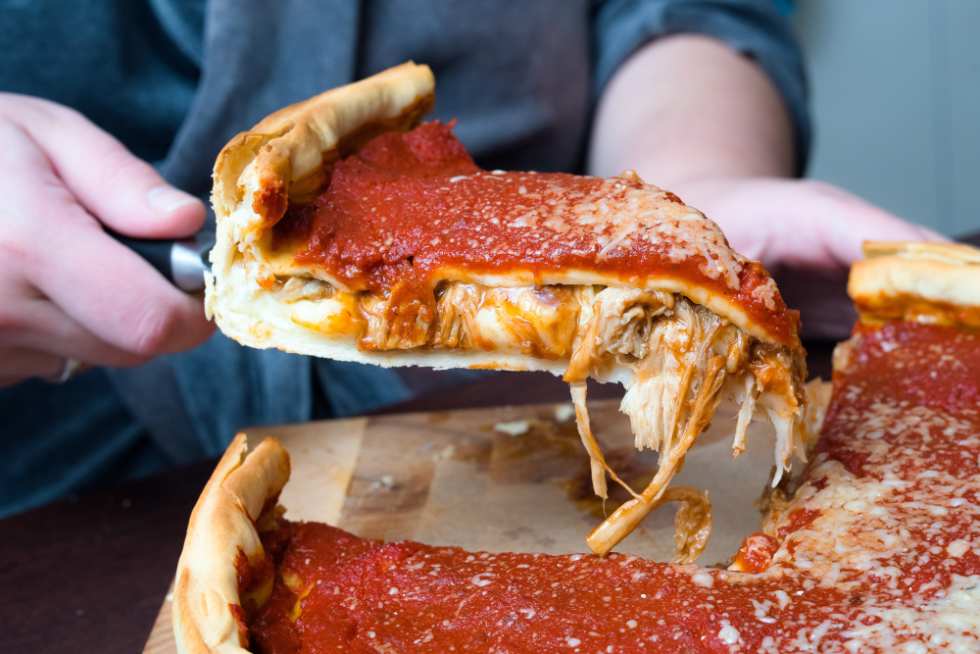
Finding Your Next Apartment in Chicago
Ready to move to Chicago or to a city nearby? Start apartment hunting with Apartment List.
If Chicago doesn't seem like the the city for you, check out the best places to live in Illinois!
Share this Article




